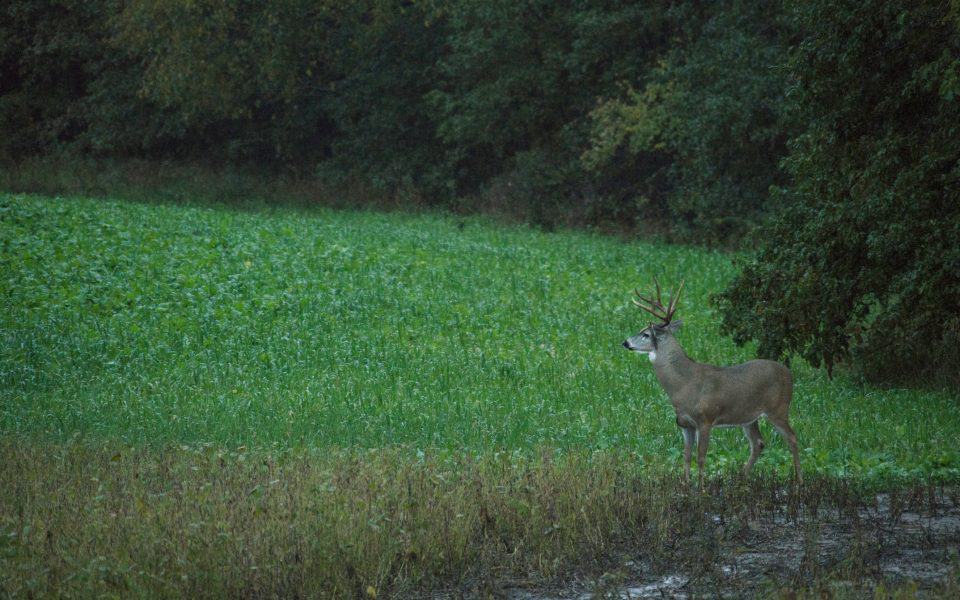Wouldn’t it be great if there was the perfect fall food plot mix for every location and year? A mix that was drought resistant but could also grow standing in water. A mix that produced just as well in freezing temperatures as in warm spring days. Yeah, it sure would be, but in most situations that’s just not reality. When you are a serious food plotter there is a lot of trial and error figuring out what deer forages grow best at a particular location. Over time you will learn that certain forages just won’t perform well at certain sites. Whether it be soil moisture, shade conditions, plant-specific nutrient limitations, or browsing pressure, there’s often only a few forages that work best at a site. One “workaround” is to plant a mix of 5 to10 forages because surely some of those will be successful.
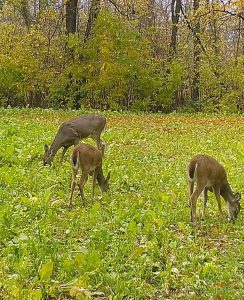
Dave Medvecky
While there’s nothing wrong with this approach, you are likely missing an opportunity to maximize forage production at that site. Providing a diverse blend of forages can be a good strategy the first year planting a site, but to have greater success the following year you need to learn to identify which cereal grains, clovers, and brassicas performed best on your plot (installing exclusion cages will help immensely with monitoring forage production). The following year, plant a mix composed only of the forages that grew best the prior year.
What Makes a Good Food Plot Mix
So, what exactly makes for a good food plot mix? Many people have opinions, and here is ours – a blend of forages that maximizes the amount of high-quality food for the longest period of time. In this context, high quality simply means the forages that are attractive to deer (palatable) and high in nutrient content. The dates will vary by region of the country, but we recommend a blend that will provide food from early in the fall until late in the spring, and even into summer. Sounds like we are recommending some magic beans! Not at all, we recommend a blend with individual plants that peak in their production, flower, and die at different times of the year. Put another way, we want a collection of plants that have varying maturation dates as this will affect plant biomass, quality, and deer attraction.
Why do different plant species have different maturation times? Based on where that species of plant evolved on the earth, there was an optimal time of year for the plant to produce and drop its seed. Same reason the timing of the whitetail rut can vary in different regions of North America – to increase the odds of a fawn surviving when it’s born in spring or summer. Being born too early or too late has negative consequences on the fawn’s survival.
Cereal grains are the workhorse forages in the fall. They have high biomass production and good quality throughout fall and winter. But as spring comes around, their quality will diminish, and this is the time deer may focus more on the clovers. See “Figure 1” depicting the average change in cereal grain crude protein as compared to an average of clover crude protein values. Notice how you can extend the window of quality forage production with a mix of clovers. Knowing which clovers have early, moderate, and late maturation is key to extend production into late spring and early summer.
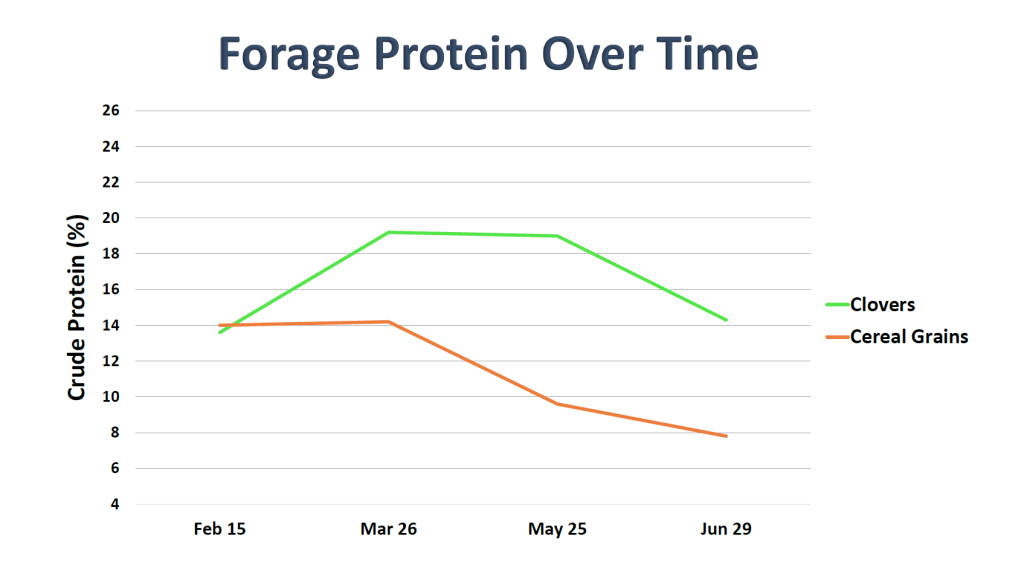
Figure 1 | MSU Deer Lab
Refer to “Figure 2” to see a theoretical depiction of staggering the maturity dates of forages using a cereal grain (oats, wheat, rye) and/or a brassica along with crimson and red clovers. The cereal grain and brassica should germinate quickly and provide forage biomass sooner than the clovers. Although you will see the clovers in your food plot during fall and winter, they really don’t produce a lot of biomass until the soil temperatures warm up during spring.
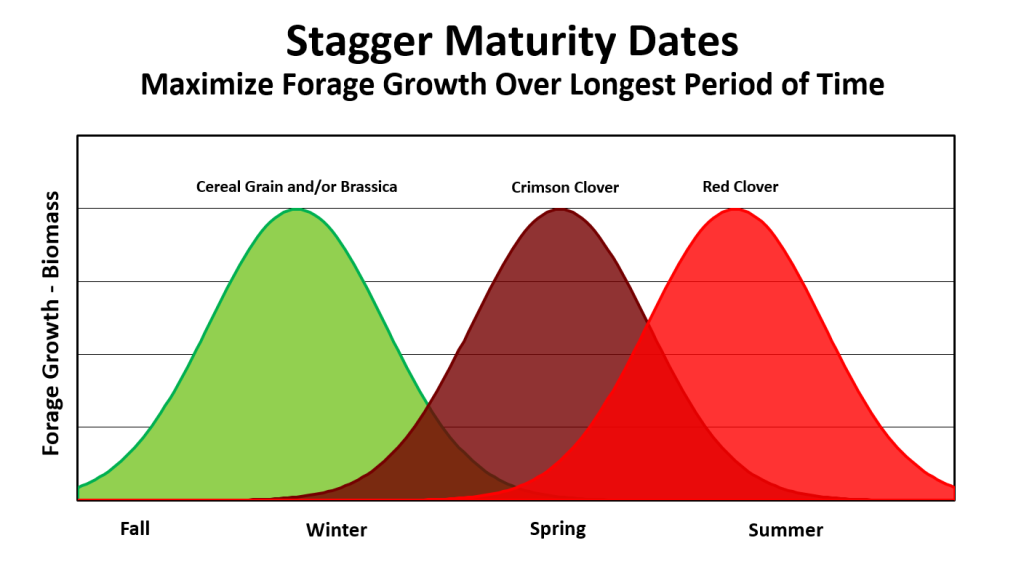
Figure 2 | MSU Deer Lab
During spring, when the cereal grains mature and brassicas begin to bolt, the clovers will grow vigorously creating great amounts of high-quality forage. But the timing of rapid growth, maturation, and death will depend on the species. In Figure 2, you see that crimson clover will mature first, followed by red clover much later. In Figure 3, you see examples from the field. On the far left is crimson clover, balansa clover in the middle, and berseem clover on the right. Notice the crimson is in full bloom, the balansa has very few blooms, and the berseem has no blooms. These three clovers have distinctly different maturation dates. Being strategic about what clovers you include will insure you are providing the greatest amount of deer forage for the longest period of time.
But what if you use the same plot for both cool-season and warm-season forages (soybean, cowpea, deer vetch, etc.)? In this situation, you should only include an early maturing clover, like crimson, because there’s no need in having a late maturing clover like berseem, arrowleaf, or red if you are going to disk up the plot in May to plant your warm-season forage.
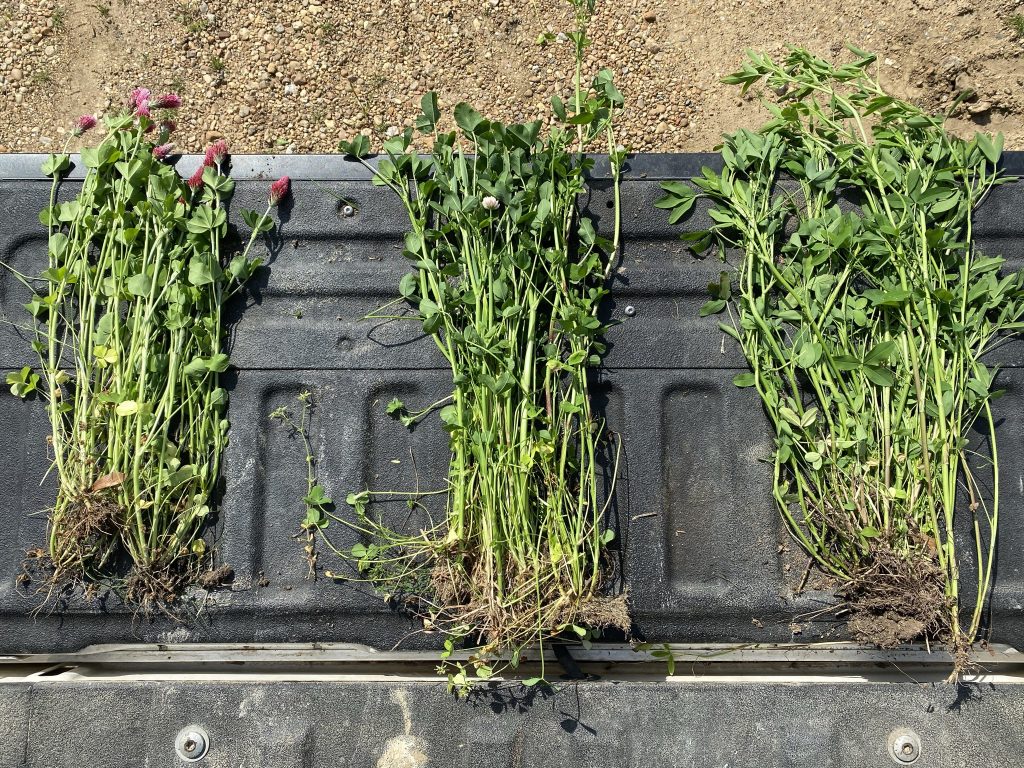
MSU Deer Lab
In a perfect world (i.e., you have enough open ground for as many food plots as you want), we don’t recommend planting cool and warm-season forages on the same piece of ground because there will be a period of time (months) between cool and warm-season plantings where your food plot is not providing any food! What is much better is to have certain areas dedicated to cool-season plots and other areas devoted to warm-season plots. You can even provide both on the same food plot if there’s sufficient acreage. For example, if you have a 5 to10 acre plot you can plant a portion of the plot in cool-season forages and the remaining area in warm-season forages. With this approach there’s more likely over-lapping, high-quality forage available for deer year-round.
A gamekeeper has to recognize that there’s no food plot mix that works in all situations, but with some strategy, experimentation, and observation to record what forages work best on each plot you can zero in on the perfect food plot mix, for a specific plot.

